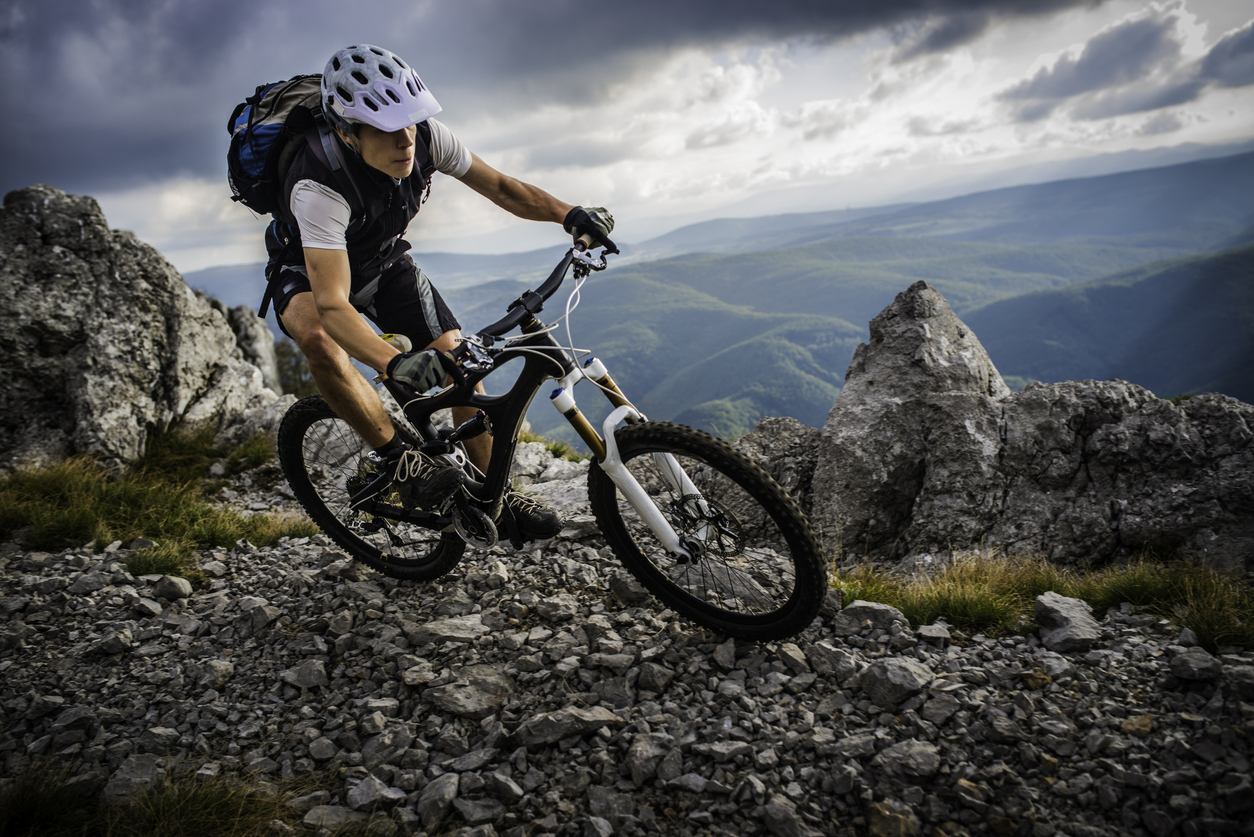
Mountain biking is an exhilarating sport that combines adrenaline, endurance, and a love for nature. Whether you’re a seasoned rider or a beginner, there’s always something new to discover in the world of mountain biking. From its humble beginnings in the 1970s to becoming a global phenomenon, mountain biking has evolved into a diverse and thrilling sport. In this article, we’ll explore 19 fascinating facts about mountain biking that will deepen your appreciation for this adrenaline-fueled activity. From incredible world records to trailblazing pioneers, we’ll delve into the history, the equipment, and the achievements that have shaped the world of mountain biking. So, gear up, take a deep breath, and let’s embark on a thrilling journey through the world of mountain biking.
Key Takeaways:
- Mountain biking is an exciting adventure sport that improves fitness, promotes mental well-being, and fosters a sense of camaraderie within the supportive biking community.
- With its origins in the 1970s, mountain biking offers a year-round, environmentally friendly, and constantly evolving experience that provides a unique sense of freedom and adventure.
Mountain biking originated in the 1970s.
In the late 1970s, a group of cycling enthusiasts in Marin County, California, started modifying their bikes to ride off-road trails, giving birth to mountain biking as we know it today.
There are various types of mountain biking.
From cross-country to downhill, enduro to freeride, mountain biking offers a range of disciplines to cater to different skill levels and preferences.
The first mountain bike race was held in 1976.
The Repack Race, organized on Mount Tamalpais in California, is considered the first-ever mountain bike race, marking the beginning of competitive mountain biking.
Mountain biking became an Olympic sport in 1996.
The International Olympic Committee recognized mountain biking as an official Olympic sport in 1996, adding a new dimension of recognition and global appeal to the sport.
Mountain biking improves cardiovascular fitness.
Riding trails and negotiating varied terrain provides an excellent cardiovascular workout, helping to improve heart health and overall endurance.
The longest mountain bike trail is more than 2,700 miles long.
The Great Divide Mountain Bike Route spans over 2,700 miles, stretching from Canada to Mexico along the spine of the Rocky Mountains.
Mountain biking can burn up to 600 calories per hour.
With its combination of intense bursts of energy and sustained effort, mountain biking is a calorie-burning machine, helping riders stay fit and healthy.
Mountain biking requires specialized gear.
From helmets and protective gear to full-suspension bikes and clipless pedals, mountain bikers invest in equipment designed to enhance performance and ensure safety on the trails.
Mountain biking promotes mental well-being.
Being out in nature and experiencing the thrill of conquering challenging trails has a positive impact on mental health, reducing stress and boosting overall happiness.
The first mountain bike magazine was published in 1985.
Mountain Bike Action, the first magazine dedicated solely to mountain biking, was launched in 1985, signaling the growing popularity and influence of the sport.
Mountain biking has its own trail building and maintenance organizations.
Organizations like the International Mountain Bicycling Association (IMBA) work to develop, maintain, and advocate for mountain bike trails, fostering the growth of the sport worldwide.
The record for the highest vertical descent in one day is 59,951 feet.
Austrian mountain biker Christof Hochenwarter set the record in 2010 by descending a total of 59,951 feet in just 24 hours, showcasing the incredible feats accomplished in the sport.
Mountain biking is a year-round activity.
With the right gear and trail conditions, mountain biking can be enjoyed in all seasons, providing riders with thrilling experiences throughout the year.
Mountain biking events attract thousands of participants.
From small local races to international competitions like the Red Bull Rampage, mountain biking events draw massive crowds and celebrate the skill and passion of riders from around the world.
The Whistler Mountain Bike Park is one of the world’s best-known downhill destinations.
Located in British Columbia, Canada, the Whistler Mountain Bike Park offers an extensive network of trails and world-class facilities, making it a dream destination for downhill biking enthusiasts.
Mountain biking is an environmentally friendly sport.
With an emphasis on responsible trail use and conservation, mountain biking promotes a sustainable approach to enjoying and preserving natural landscapes.
Mountain biking fosters a sense of camaraderie.
The mountain biking community is known for its supportive and inclusive nature, with riders often forming lasting friendships through their shared passion for the sport.
Mountain biking is constantly evolving.
New technologies, trail designs, and riding styles continue to push the boundaries of what is possible in mountain biking, ensuring the sport remains dynamic and exciting.
Mountain biking offers a sense of freedom and adventure.
Exploring rugged terrains, soaring down exhilarating descents, and pushing personal limits on a mountain bike provides a unique sense of freedom and adventure that is hard to match.
So, whether you’re an avid mountain biker or someone considering taking up this exhilarating sport, remember these 19 facts about mountain biking as you embark on your own thrilling off-road adventures!
References:
– Mountain Bike Action
– International Mountain Bicycling Association
Conclusion
Mountain biking is a thrilling and adventurous sport that offers numerous benefits to both the mind and body. From challenging terrains to breathtaking mountain views, it provides a unique experience for riders of all skill levels. Whether you’re a beginner or an experienced rider, mountain biking allows you to explore nature, push your limits, and enjoy the adrenaline rush.
With its growing popularity, it’s important to stay informed about the facts of mountain biking. From its origins to its health benefits, understanding these key aspects will enhance your overall mountain biking experience. So, get your gear ready and start exploring the trails – the world of mountain biking awaits!
FAQs
1. How did mountain biking originate?
Mountain biking originated in the 1970s when cyclists started modifying their bikes to ride on off-road terrains. It began as an adventurous exploration of mountainous areas and has since evolved into a popular sport.
2. What are the health benefits of mountain biking?
Mountain biking is an excellent cardiovascular exercise that promotes weight loss, increases stamina, and improves overall fitness. It also boosts mental health, reduces stress, and enhances coordination and balance.
3. What protective gear is essential for mountain biking?
Essential protective gear for mountain biking includes a well-fitted helmet, knee and elbow pads, gloves, and sturdy footwear. These protect against potential injuries and enhance rider safety.
4. Are there different types of mountain bikes?
Yes, there are various types of mountain bikes depending on the intended terrain and riding style. Some popular types include cross-country bikes, trail bikes, downhill bikes, and fat bikes designed for snow and sand.
5. What are the best mountain biking destinations?
There are numerous incredible mountain biking destinations worldwide. Some top choices include Moab in Utah, Whistler in British Columbia, and Finale Ligure in Italy. Researching and consulting local bikers can help in finding the best spots in your region.
6. How do I choose the right mountain bike?
Choosing the right mountain bike depends on factors like your body type, intended terrain, riding style, and budget. It’s recommended to visit a reputable bike shop and seek advice from experts to find the most suitable bike for your needs.
7. Can children participate in mountain biking?
Yes, children can participate in mountain biking. There are specific bikes designed for younger riders, along with dedicated trails and programs aimed at teaching kids the basics of off-road cycling in a safe and enjoyable manner.
8. How should I prepare for a mountain biking trail?
Preparing for a mountain biking trail involves ensuring your bike is in good working condition, carrying essential tools and spare parts, staying hydrated, wearing appropriate clothing, and familiarizing yourself with the trail map and rules.
9. Are there any mountain biking competitions?
Yes, mountain biking competitions exist at various levels. From local races to international events like the UCI Mountain Bike World Cup, there are ample opportunities for riders to showcase their skills and compete with fellow enthusiasts.
10. Can I start mountain biking as a beginner?
Absolutely! Mountain biking welcomes riders of all skill levels. Starting with beginner-friendly trails, taking lessons, and gradually building your skills and confidence will allow you to fully enjoy the sport.
Thirsty for more exhilarating mountain biking knowledge? Quench that thirst by exploring our other captivating articles. From the thrilling origins and explosive growth of this global sport to the best bikes for conquering any terrain, our engaging content will keep you pedaling for more. So, grab your helmet, tighten those gloves, and get ready to unleash your inner adventurer as you dive deeper into the adrenaline-pumping world of mountain biking.
Was this page helpful?
Our commitment to delivering trustworthy and engaging content is at the heart of what we do. Each fact on our site is contributed by real users like you, bringing a wealth of diverse insights and information. To ensure the highest standards of accuracy and reliability, our dedicated editors meticulously review each submission. This process guarantees that the facts we share are not only fascinating but also credible. Trust in our commitment to quality and authenticity as you explore and learn with us.


